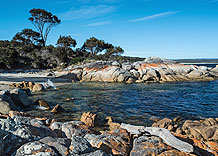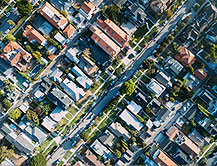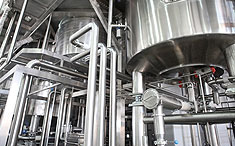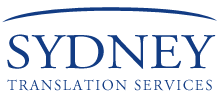NAATI Certified Translation for Cambridge Park
Certified translation examples from Sydney Translation Services.
Driver License
Birth Certificate
Passport Translation
Marriage Certificate
Death Certificate
Divorce Certificate
Degree Certificate
No-Criminal Record
The Gupapuyngu Language

- Unique Phonology: Gupapuyngu, a Yolŋu Matha language of North-East Arnhem Land, features a rich phonological system with distinct sounds that are uncommon in many other languages. Translators must be attuned to the specific sounds and pronunciations to accurately convey meaning, especially when dealing with oral histories or culturally significant texts.
- Oral Tradition: Gupapuyngu is traditionally an oral language, with written forms developed more recently. As such, much of the translation work involves transcribing spoken language, which requires a deep understanding of cultural context and oral storytelling techniques.
- Contextual Sensitivity: Many words and phrases in Gupapuyngu are deeply tied to cultural practices and the local environment. Translators need to ensure that these cultural nuances are preserved in the translation, especially when dealing with ceremonial or traditional knowledge, where mistranslation could lead to significant misinterpretations.
- Translating Legal and Educational Documents: Gupapuyngu is increasingly used in legal and educational contexts, especially in the Northern Territory. Translators working on these types of documents need to ensure that the correct legal and academic terminology is employed, respecting both the traditional language structure and the specific requirements of official communication.
About Cambridge Park
 Cambridge Park is a suburb of Sydney, in the state of New South Wales, Australia 53 kilometres west of the Sydney central business district, in the local government area of the City of Penrith. It is part of the Greater Western Sydney region. Prior to European settlement, what is now Cambridge Park was home to the Mulgoa people who spoke the Darug language. They lived a hunter-gatherer lifestyle governed by traditional laws, which had their origins in the Dreamtime. Their homes were bark huts called 'gunyahs'. They hunted kangaroos and emus for meat, and gathered yams, berries and other native plants. Shortly after the arrival of the First Fleet in Australia in 1788, an outbreak of smallpox decimated the local indigenous communities and made it easier for settlers to disposses them of their land. The first land grant in the area was made in 1831 to Phillip Parker King, son of the Governor Phillip Gidley King. He named it St Stephens although it later became part of the Werrington estate belonging to his sister Mary Lethbridge. It was run as a farm until the 1880s when the estate was subdivided into smaller farms, one of which became Cambridge Park. Development in the area began in the 1950s. Cambridge Park Post Office opened on 2 January 1953 and closed around 1995.
Cambridge Park is a suburb of Sydney, in the state of New South Wales, Australia 53 kilometres west of the Sydney central business district, in the local government area of the City of Penrith. It is part of the Greater Western Sydney region. Prior to European settlement, what is now Cambridge Park was home to the Mulgoa people who spoke the Darug language. They lived a hunter-gatherer lifestyle governed by traditional laws, which had their origins in the Dreamtime. Their homes were bark huts called 'gunyahs'. They hunted kangaroos and emus for meat, and gathered yams, berries and other native plants. Shortly after the arrival of the First Fleet in Australia in 1788, an outbreak of smallpox decimated the local indigenous communities and made it easier for settlers to disposses them of their land. The first land grant in the area was made in 1831 to Phillip Parker King, son of the Governor Phillip Gidley King. He named it St Stephens although it later became part of the Werrington estate belonging to his sister Mary Lethbridge. It was run as a farm until the 1880s when the estate was subdivided into smaller farms, one of which became Cambridge Park. Development in the area began in the 1950s. Cambridge Park Post Office opened on 2 January 1953 and closed around 1995.
Other Gupapuyngu Translation Service Locations
Lane Cove Gupapuyngu Translator, Lindfield Gupapuyngu Translator, Cambridge Gardens Gupapuyngu Translator, Camden Gupapuyngu Translator, Campbelltown Gupapuyngu Translator, Camperdown Gupapuyngu Translator.




 Cambridge Park is a suburb of Sydney, in the state of New South Wales, Australia 53 kilometres west of the Sydney central business district, in the local government area of the City of Penrith. It is part of the Greater Western Sydney region. Prior to European settlement, what is now Cambridge Park was home to the Mulgoa people who spoke the Darug language. They lived a hunter-gatherer lifestyle governed by traditional laws, which had their origins in the Dreamtime. Their homes were bark huts called 'gunyahs'. They hunted kangaroos and emus for meat, and gathered yams, berries and other native plants. Shortly after the arrival of the First Fleet in Australia in 1788, an outbreak of smallpox decimated the local indigenous communities and made it easier for settlers to disposses them of their land. The first land grant in the area was made in 1831 to Phillip Parker King, son of the Governor Phillip Gidley King. He named it St Stephens although it later became part of the Werrington estate belonging to his sister Mary Lethbridge. It was run as a farm until the 1880s when the estate was subdivided into smaller farms, one of which became Cambridge Park. Development in the area began in the 1950s. Cambridge Park Post Office opened on 2 January 1953 and closed around 1995.
Cambridge Park is a suburb of Sydney, in the state of New South Wales, Australia 53 kilometres west of the Sydney central business district, in the local government area of the City of Penrith. It is part of the Greater Western Sydney region. Prior to European settlement, what is now Cambridge Park was home to the Mulgoa people who spoke the Darug language. They lived a hunter-gatherer lifestyle governed by traditional laws, which had their origins in the Dreamtime. Their homes were bark huts called 'gunyahs'. They hunted kangaroos and emus for meat, and gathered yams, berries and other native plants. Shortly after the arrival of the First Fleet in Australia in 1788, an outbreak of smallpox decimated the local indigenous communities and made it easier for settlers to disposses them of their land. The first land grant in the area was made in 1831 to Phillip Parker King, son of the Governor Phillip Gidley King. He named it St Stephens although it later became part of the Werrington estate belonging to his sister Mary Lethbridge. It was run as a farm until the 1880s when the estate was subdivided into smaller farms, one of which became Cambridge Park. Development in the area began in the 1950s. Cambridge Park Post Office opened on 2 January 1953 and closed around 1995.